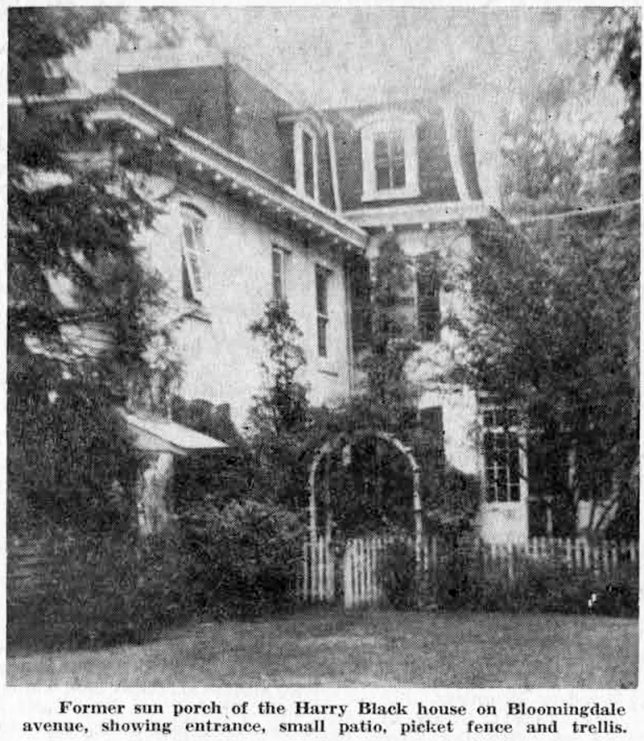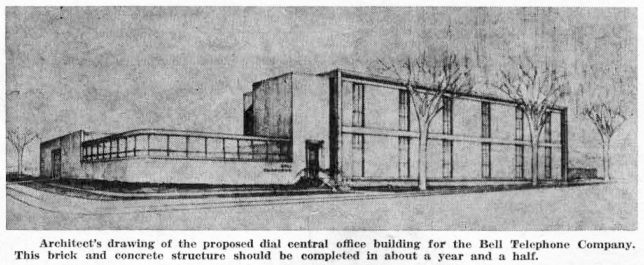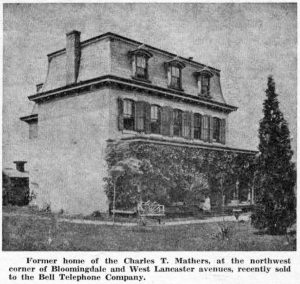Until Wednesday of last week, two of Wayne’s best known landmarks were the twin oak trees that stood side by side on Radnor Street road, just to the south of its intersection with Poplar avenue.
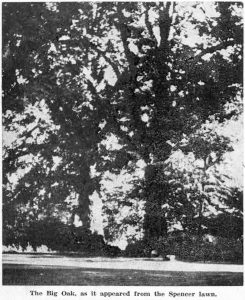 Many times passers-by stopped to ask Mr. and Mrs. Russell B. Spencer, on whose property these trees stood, what they knew of their history. There was little to tell, except that they were apparently of great age, because of their obvious tremendous size and height. A few years ago, two representatives from the “Philadelphia Evening Bulletin” stopped to take pictures of the trees and to ask their owner’s permission to list them in the “250 Years Old Tree Club” of the “Bulletin.” This at least gave a date of sorts for the trees.
Many times passers-by stopped to ask Mr. and Mrs. Russell B. Spencer, on whose property these trees stood, what they knew of their history. There was little to tell, except that they were apparently of great age, because of their obvious tremendous size and height. A few years ago, two representatives from the “Philadelphia Evening Bulletin” stopped to take pictures of the trees and to ask their owner’s permission to list them in the “250 Years Old Tree Club” of the “Bulletin.” This at least gave a date of sorts for the trees.
The Spencers, proud of these magnificent old trees, whose wide spreading limbs gave shade not only to their yard, but to the Cowan playgrounds and Radnor Street road, had them examined from time to time by tree surgeons to prolong their lives. Wind storms came and went, apparently without doing them material damage. Even “Hurricane Hazel,” as it cut its devastating swath through Wayne, last October, left the two trees little harmed.
And then last Wednesday, as Mrs. Spencer stood at one of the windows of her home and noted the quietness of the scene along Radnor Street road – the school bus had just departed and Cowan Play Field was now empty of children – she heard a small crackling noise in one of the old oaks. With startling speed this noise grew into a great roar as the tree closest to the field crashed to the ground, sending up clouds of sawdust, almost smoke-like in their density.
To Mrs. Spencer, her beloved old oak tree went down “just as if it were tired to death.” It would seem as if in the wisdom of its great years it had bided its time until there were no children playing in their favorite shaded corner of the school field; there was no school bus standing under it, and until there was a lull in the almost constant stream of traffic along the road, usually made even heavier on a hot summer day by swimmers on their way to and from Martin’s Dam and Colonial Village swimming pools.
From all sides neighbors rushed to the scene, worried by the thought of the devastation that the old tree might have wrought as it fell.
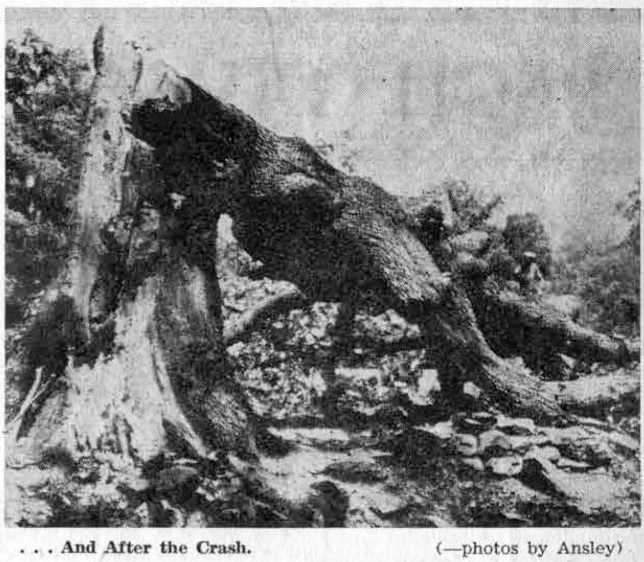 The heavy branches and limbs covered the area and electric and telephone wires were entangled in its reach. Hastily summoned crews of repairmen soon restored service while Radnor township workmen cleared the road for the passage of cars. By Thursday afternoon, the ten-man crew had cleared away all but the huge trunk, with one sharply pointed section pointed skyward. As a safety measure, the other old oak has also been taken down by township workmen.
The heavy branches and limbs covered the area and electric and telephone wires were entangled in its reach. Hastily summoned crews of repairmen soon restored service while Radnor township workmen cleared the road for the passage of cars. By Thursday afternoon, the ten-man crew had cleared away all but the huge trunk, with one sharply pointed section pointed skyward. As a safety measure, the other old oak has also been taken down by township workmen.
With the passing of these old trees. Mr. and Mrs. Spencer will miss the visitors who rang the door bell to inquire about the age and history of the twin oaks. They will remember the old German scissors grinder, coming up the road ringing his bell, who stopped to ask if he might have the “tree mushroom,” big as a football, which was growing on the old oak. They will think also of the adventuresome lad, who called the tree “magnificent” and proceeded to walk straight up one of its largest limbs before Mrs. Spencer could stop him.
And they will remember the two occasions on which the Radnor Fire Company was called into action because of fires set in the hollow in the trunk of the one oak. The first of these fires enlarged the original hole to the extent that children could then comfortably “play house” in the old tree.
And thus, with the death of these old oak sentinels, we record the passing of an era.


